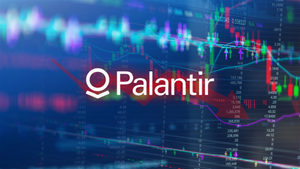
Global gold producers have struck a rich vein of profitability in the third quarter of 2025, as unprecedented bullion prices propelled their earnings to record highs. With gold surpassing the $4,000 per ounce mark and averaging over $3,450, the sector has witnessed a significant uplift in revenues and a strengthening of balance sheets, signaling a robust period for an industry often seen as a safe haven amidst economic uncertainties. This surge in performance has immediate implications for investors, as mining giants translate higher profits into enhanced shareholder returns and strategic investments.
Record Bullion Prices Fuel Unprecedented Profitability
The third quarter of 2025 proved to be a historic period for gold, with the London Bullion Market Association (LBMA) gold price establishing 13 new all-time highs. The average quarterly price soared to US$3,456.54 per ounce, marking a substantial 40% year-over-year increase and a 5% rise quarter-over-quarter. The pinnacle was reached on October 17, 2025, when gold touched an astonishing US$4,379.13 per ounce, far exceeding prior analyst projections. This sustained high-price environment created exceptionally fertile ground for gold mining operations globally.
The immediate consequence for gold producers was a dramatic increase in revenues and profitability. Companies across the board reported robust Q3 2025 earnings, with the elevated gold prices directly expanding profit margins. This financial boon allowed many to report their strongest quarters in history, exceeding analyst expectations. Alongside soaring revenues, the industry also benefited from robust investment demand, with significant inflows into gold-backed Exchange Traded Funds (ETFs) and consistent demand for physical gold. Central banks, continuing a trend of "de-dollarisation" and seeking safe-haven assets, acquired a net 220 tonnes of gold in Q3 2025, a 28% increase from the previous quarter.
However, the golden glow was not without its shadows. Gold producers continued to grapple with persistent operational cost pressures. Inflationary trends, higher royalty expenses directly tied to gold prices, increased contractor fees, taxes, and duties contributed to elevated all-in sustaining costs (AISC), which were projected to range between $900 and $1,400 per ounce globally for 2025. Furthermore, the record high prices had a negative impact on jewellery consumption, leading to a double-digit year-over-year decline in Q3 2025, particularly in price-sensitive markets like India. Despite these challenges, overall mine production saw a modest 2% year-over-year increase, with the industry increasingly adopting technological innovations like automated drilling rigs, drones, and AI-driven exploration to enhance efficiency.
Gold Mining Giants Strike Gold in Q3 Reports
The record surge in bullion prices during Q3 2025 has translated directly into exceptional financial results for leading gold producers, solidifying their positions and rewarding shareholders. Companies like Newmont, Agnico Eagle Mines, and Franco-Nevada have reported stellar earnings, while Barrick Gold is poised to follow suit.
Newmont Corporation (NYSE: NEM) reported stronger-than-expected earnings for Q3 2025, with an impressive Earnings Per Share (EPS) of $1.71, comfortably surpassing the forecast of $1.44. Revenues also exceeded projections, reaching $5.52 billion against an anticipated $5.19 billion. The company generated a record $1.6 billion in free cash flow, marking its fourth consecutive quarter with over $1 billion. Newmont's average realized gold price soared to $3,539 per ounce, a significant jump from $2,518 a year prior. Despite a 15% decrease in production to 1.4 million attributable gold ounces due to lower ore grades and planned maintenance, the company improved its 2025 cost and capital guidance, maintaining its overall positive outlook. Initial market reactions saw some volatility, with a post-earnings decline potentially linked to a broader gold price correction just before the announcement.
Agnico Eagle Mines Limited (NYSE: AEM) also delivered a robust Q3 2025, posting adjusted earnings of $2.16 per share, significantly beating the Zacks Consensus Estimate of $1.76. Record revenues hit $3.06 billion, exceeding the anticipated $2.95 billion. The company's realized gold price of $3,476 per ounce was a key driver, far exceeding their guidance assumption. Agnico Eagle generated $1.2 billion in free cash flow and repaid $400 million in debt. While total cash costs per ounce increased to $994 due to higher royalty costs linked to gold prices, the overall performance led to a positive market reaction, with the stock surging after hours. The company maintained its 2025 gold production guidance of 3.3 million to 3.5 million ounces.
Franco-Nevada Corporation (NYSE: FNV), a prominent gold-focused royalty and streaming company, reported record quarterly results for Q3 2025. Revenue reached an all-time high of $487.7 million, a substantial 77% increase from Q3 2024, driven by higher gold prices, strong operations, and recent acquisitions. The company's net income was a record $287.5 million, or $1.49 per share, with adjusted net income of $1.43 per share beating analyst estimates. Precious metals accounted for a dominant 85% of Franco-Nevada's revenue, with gold alone contributing 72%. The company is now debt-free and has narrowed its 2025 total gold equivalent ounce (GEO) sales guidance towards the higher end, signaling continued confidence in the strong gold market.
Barrick Gold Corporation (NYSE: GOLD) is scheduled to release its Q3 2025 results on November 10, 2025, but analysts are anticipating strong performance. Forecasts suggest quarterly earnings of $0.57 per share, an 83.9% year-over-year increase, on revenues of $4.22 billion. The consensus EPS estimate has seen upward revisions, indicating potential for an earnings beat. Despite some production challenges in Q2 2025, the elevated gold prices are expected to significantly boost Barrick's margins in Q3, aligning with the positive trend seen across the sector.
The consistent theme across these major players is the direct and substantial benefit derived from the elevated gold prices. While some faced production fluctuations or increased operating costs, the overwhelming tailwind of record bullion prices has propelled them to exceptional financial performance, reinforcing the sector's current strength.
A Golden Era: Wider Significance and Market Transformation
The unprecedented rally in gold prices and the subsequent stellar Q3 2025 earnings for gold miners are not merely transient market events but indicative of a deeper, structural transformation within the global financial landscape. This shift is being driven by a confluence of macroeconomic, geopolitical, and industry-specific factors, promising profound long-term impacts across the entire gold ecosystem.
The current gold surge, with prices averaging well above historical norms and even challenging the $5,000 per ounce mark in future projections, represents a structural repricing of the metal. Gold is increasingly performing well even in "risk-on" market phases, defying traditional correlations with equities and real yields. This sustained bullish sentiment is underpinned by continued robust central bank purchases – a historic reversal in 2025 saw central banks holding more reserves in gold than in U.S. Treasuries, signaling a questioning of dollar hegemony. Persistent geopolitical uncertainty, trade policy disputes, and expectations of continued monetary easing leading to lower real interest rates further fuel gold's appeal as a safe-haven asset. This environment also incentivizes increased exploration and development, with gold exploration budgets projected to rise significantly in 2025, buoyed by higher investor confidence and technological advancements.
The ripple effects extend across the entire industry. Junior gold miners and exploration companies are uniquely positioned to benefit, as higher prices enhance the value of their assets, making them more attractive for investment and potential acquisition by larger players. A rising gold price can lower cut-off grades, effectively increasing the economic viability of resources and leading to substantial valuation uplifts. For larger, diversified mining companies, the improved cash flow and profitability translate into higher dividend payouts and potential stock price appreciation. This dynamic could also widen the gap between efficient, low-cost producers and their higher-cost counterparts, potentially spurring further consolidation and mergers and acquisitions (M&A) as major players seek to acquire promising assets and optimize their portfolios. Beyond the miners, the entire supply chain, including equipment suppliers, service providers, refiners, and distributors, is experiencing increased demand and profitability due to higher capital expenditure by the mining sector.
Regulatory and policy implications are also significant. The aggressive gold accumulation by central banks, driven by de-dollarization efforts and financial system diversification, provides a robust "price floor" for gold and contributes to its upward momentum. Furthermore, the implementation of Basel III regulations between 2023 and 2025 has fundamentally altered how gold is treated within the banking system, making unallocated gold trading more expensive for banks and shifting focus towards physical gold. Governments are also playing an increased role, with heightened regulatory pressures pushing companies to adopt smarter, greener practices and adhere to stricter Environmental, Social, and Governance (ESG) standards. ESG factors are no longer a trend but a necessity, with over 70% of mining investors in 2025 expected to prioritize these criteria. Historically, gold has consistently served as a safe-haven asset during times of economic distress, inflation, and geopolitical uncertainty, as evidenced by rallies in the 1970s, post-2008 financial crisis, and during the COVID-19 pandemic. While historical patterns suggest cooling after stability returns, the current landscape of persistent central bank buying and geopolitical fragmentation points towards a more sustained structural shift rather than a mere cyclical trend.
The Golden Horizon: What Comes Next for Bullion and Miners
The robust performance of gold and its miners in Q3 2025 sets the stage for a compelling future, characterized by sustained high prices and strategic shifts within the industry. Both short-term and long-term outlooks for gold remain predominantly bullish, driven by a complex interplay of economic uncertainties, persistent geopolitical tensions, robust central bank demand, and anticipated shifts in global monetary policy.
In the short term (Q4 2025), gold prices are projected to maintain their upward trajectory, with consensus forecasts suggesting a trading range of $4,200-$4,500 per ounce. This momentum is underpinned by continued central bank accumulation, potential Federal Reserve policy recalibration following election outcomes, and seasonal year-end demand. Looking further ahead into 2026 and beyond, major financial institutions like J.P. Morgan, Goldman Sachs, and Morgan Stanley are raising their gold price forecasts, with some predicting gold to reach $4,000 per troy ounce by mid-2026 and potentially soaring significantly above $5,000 in a "stress scenario" involving a crisis of confidence or major geopolitical escalation. This sustained rally is fueled by persistent central bank demand, especially from emerging markets diversifying away from the US dollar, ongoing geopolitical uncertainty enhancing gold's safe-haven appeal, and the anticipated Federal Reserve rate-cutting cycle beginning in 2025, which reduces the opportunity cost of holding non-yielding assets like gold.
For the gold mining industry, the strong Q3 2025 earnings are a significant tailwind, boosting profit margins and attracting increased investor interest. This high-price environment is fostering enhanced financial flexibility, allowing miners to deleverage and invest strategically. Companies are likely to pursue geographic diversification into more stable mining jurisdictions, engage in increased M&A activity to acquire proven reserves and production capacity, and intensify focus on cost optimization and operational efficiency through technological integration. Furthermore, with improved balance sheets, miners can allocate more capital towards exploration and development of existing projects, crucial for reserve replacement given declining exploration success rates. Prioritizing leading sustainability practices (ESG) will also continue to be a crucial aspect for investor appeal and regulatory compliance. However, challenges persist, including persistent inflationary pressures on operational costs, potential short-term production volume adjustments, and the risk of demand destruction in price-sensitive segments like jewelry.
Market opportunities abound for investors who are confident in sustained high gold prices and seek a hedge against global uncertainties. Continued central bank and investor demand, particularly from gold-backed ETFs and China, will underpin prices. The increasing use of gold in technological applications, such as electronics and renewable energy, also ensures a steady consumer base. The junior mining sector, with promising exploration projects in stable jurisdictions, could offer significant opportunities. Conversely, potential challenges include a stronger-than-expected US dollar or a more hawkish Fed policy, which could stall gold's momentum, or a significant decline in inflationary pressures. Investors should consider a base case scenario of gold between $4,000-$4,500/oz by mid-2026, maintaining core gold positions and investing in established, efficient miners. A bullish scenario of gold exceeding $5,000/oz would warrant increased exposure to gold and high-leverage mining stocks, while a moderate scenario suggests utilizing short-term pullbacks as buying opportunities for long-term positions in fundamentally strong companies.
Golden Prospects: A Comprehensive Wrap-Up
The third quarter of 2025 has unequivocally marked a period of exceptional strength for global gold producers, cementing their financial health and strategic positioning amidst a landscape of record-breaking bullion prices. The key takeaway from this earnings season is the direct and substantial leverage that elevated gold prices provide to the miners' bottom lines, translating into robust profitability, strengthened balance sheets, and increased shareholder returns. While operational costs remain a persistent challenge, the sheer force of gold's appreciation has largely offset these pressures, leading to impressive per-ounce profits.
Moving forward, the market outlook for gold and its miners remains decidedly bullish. Forecasts from leading financial institutions project gold prices to maintain their upward trajectory, potentially averaging around $4,000 per ounce by mid-2026, with some optimistic scenarios pushing it even higher. This sustained strength is underpinned by a confluence of factors: persistent central bank demand for diversification away from the US dollar, ongoing geopolitical uncertainties driving safe-haven investment, and expectations of continued monetary easing by central banks globally. These macro-environmental tailwinds create a fertile ground for the gold mining sector to continue its strong performance.
The lasting impact of this golden era extends beyond mere financial figures. The improved financial health of mining companies empowers them to invest more heavily in future growth through exploration and development, potentially leading to new discoveries and extended mine lives. It also accelerates the adoption of modernization and sustainability initiatives, as companies leverage their financial flexibility to invest in advanced technologies and environmentally responsible practices. This period could also lead to a re-rating of gold mining stocks, as the market begins to acknowledge their consistent outperformance and attractive valuations relative to the broader market, potentially closing the historical "valuation gap."
For investors, vigilance remains key in the coming months. It is crucial to monitor the trajectory of gold prices, paying close attention to central bank actions, US dollar strength, and interest rate movements. Beyond the macro picture, company-specific metrics are vital: assess All-In Sustaining Costs (AISC) as a measure of efficiency, track production guidance and execution, and look for exploration success and healthy balance sheets. Geopolitical developments and inflation reports will continue to be significant drivers of gold's safe-haven demand. Despite strong earnings, many gold mining stocks still present attractive valuations, suggesting potential for further appreciation as the market potentially revalues the sector. Companies demonstrating strong commitments to ESG performance may also gain a competitive edge and attract more institutional investment.
This content is intended for informational purposes only and is not financial advice





